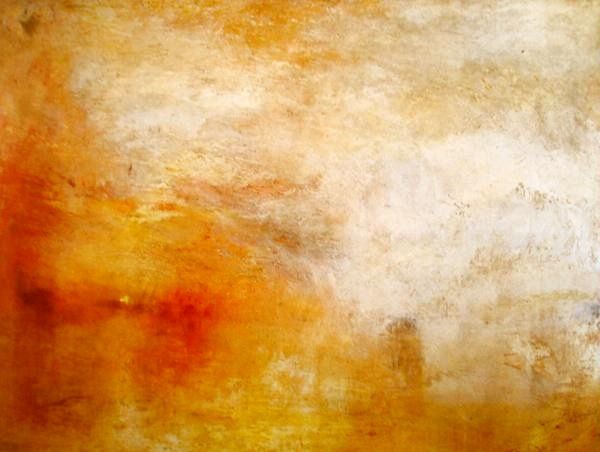Actualité volcanique, Articles de fond sur étude de volcan, tectonique, récits et photos de voyage
Par Bernard Duyck
The eruption of Tambora did not leave only victims ... Volcanic emissions affect the climate, and are also responsible for optical phenomena: that veil of aerosols, mainly sulfur dioxide / sulfuric acid, can change the colors of the sky at sunset.
Professor Zerefos gave a key to this change, in an article in the Journal of the European Geosciences Union: "In the coloring of the sunsets, this is the way the brain perceives green and red which contains important information on the environment. "
The painters of the 19th century have reproduced these specific colors without understanding the cause.
This eruption has also allowed the artistic evolution of William Turner, who went from an agreed paint to the color magnification; his attraction to the representation of the atmospheres place him as a pioneer of "Impressionism". It will go even further, removing the descriptive side and limited to the colorful juxtaposition, as in his "Sunset" in 1840 ... according to some, "the first fruits of lyrical abstraction", another movement of yhe modern painting.
The climatic effects touching Switzerland will influence the literature of the time.
That year, a villa near Lake Geneva in Switzerland, home to Lord Byron. During the summer, it is visited by Mary Shelley and his immediate family; retained inside because of the incessant rain, Byron offers his guests to write each a ghost story.
Byron wrote a fragmented scenario that allowed a friend to be inspired to write "Dracula".
Mary Shelley, inspired by reading the Fantasmagoriana and under the influence of opium, had a nightmare where she has a vision of "a pale student looked at the thing he had animated." She finished writing "Frankenstein" in the spring of 1817.
"Frankenstein or the Modern Prometheus," is considered the precursor novel of science fiction.
John William Polidori will write about "The Vampire".
On the left, frontispiece of the 1831 edition of "Frankenstein" - to the right, Lord Byron - 1824 portrait by Thomas Phillips (1770-1845) - UK Government Art Collection - one click to visualize
This period coincides with the publication of Lord Byron's poem "Darkness" ... here are the opening lines:
“I had a dream, which was not all a dream.
The bright sun was extinguish’d, and the stars
Did wander darkling in the eternal space,
Rayless, and pathless, and the icy earth
Swung blind and blackening in the moonless air;
Morn came and went – and came, and brought no day”
Bright colors and dark thoughts ... inspired by the eruption of Tambora and his atmospheric effects.
Sources :
- Darkness, poème de Lord Byron - link
- European Geosciences Union - Famous paintings help study the Earth’s past atmosphere - 25.03.2014 - link
- Further evidence of important environmental information content in red-to-green ratios as depicted in paintings by great masters - C. S. Zerefos & al. - link
- Zerefos, C. S., Gerogiannis, V. T., Balis, D., Zerefos, S. C., and Kazantzidis, A.: Atmospheric effects of volcanic eruptions as seen by famous artists and depicted in their paintings, Atmos. Chem. Phys., 7, 4027-4042, doi:10.5194/acp-7-4027-2007, 2007.
Thème Magazine - Hébergé par Overblog



/image%2F0935525%2F20150326%2Fob_7b7d82_frankenstein-1831-inside-cover-2.jpg)
/image%2F0935525%2F20150326%2Fob_8f07f6_byron-1824-thomas-phillips-1770-184.jpg)

